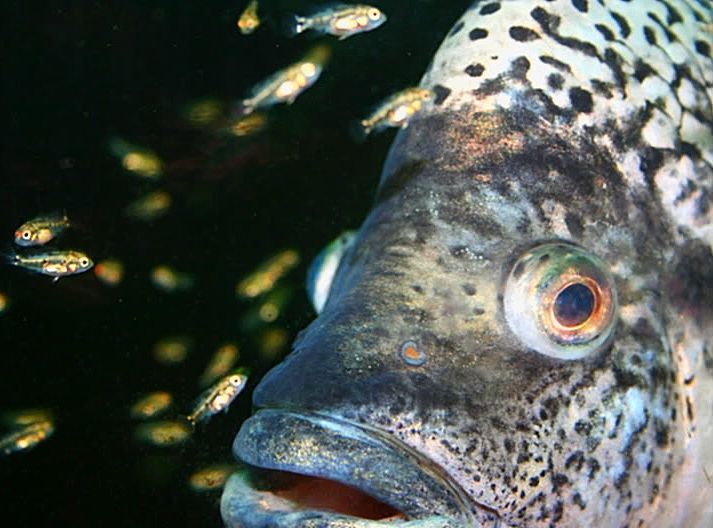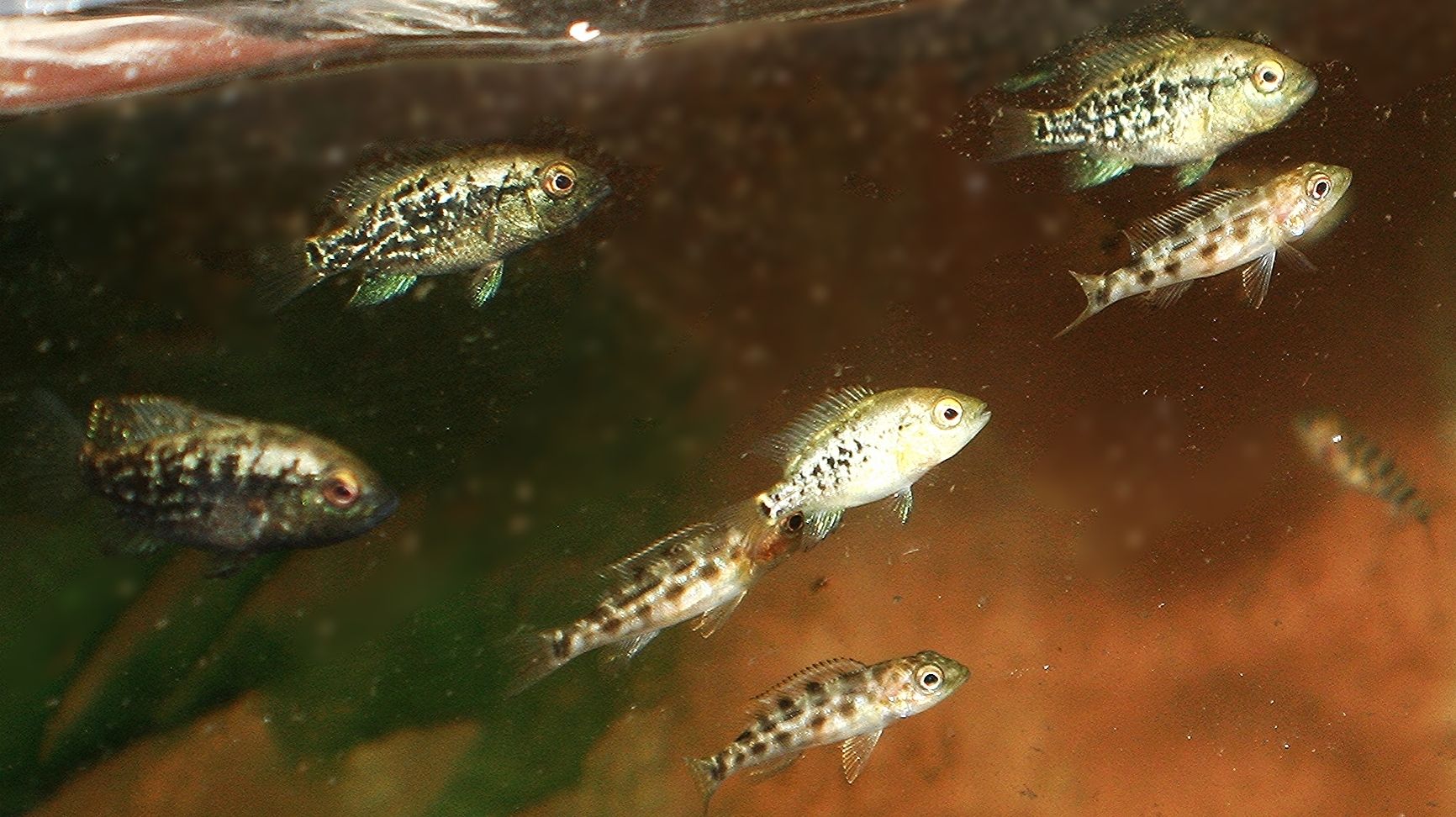Until recently Herichthys bartoni, but the bartoni/labridens group has been given its own genus, Nosferatu, suggestive of the canine teeth.
http://link.springer.com/article/10.1007/s10750-014-1891-8
Abstract
The genus Herichthys is widely considered to be the monophyletic representative of Cichlidae in northeastern Mexico and southern Texas. It is also the northernmost distributed genus of Neotropical Cichlids. Its distribution stretches over an area that is characterized by an intricate geologic and climatic history that affected its temporal and spatial diversification north of the Trans-Mexican Volcanic-Belt. We access the evolutionary history of the genus Herichthys based on a phylogenetic reconstruction using a mitochondrial fragment of gene Cox1. We evaluate its morphological variation, its correspondence with molecular differentiation and suggest a biogeographical scenario based on a molecular clock and demographic history. Furthermore, we describe Nosferatu new genus, composed of Nosferatu pame (assigned as type species), N. molango, N. pratinus, N. bartoni, N. labridens, N. pantostictus, and N. steindachneri. Genus is characterized by a transition to prolongation in the size of the symphysial pair of teeth relative to that of the other teeth in the outer row of the upper jaw; breeding pigmentation that consists of darkening of ventral area extending over nostrils, opercular series, or pectoral fins; depressed dorsal fin rarely expands beyond anterior third of caudal fin; and an elongated, elastic, smooth caecum adhered to a saccular stomach. We also describe Herichthys tepehua n. sp. found in the Pantepec, Cazones, Tenixtepec, Tecolutla, and Solteros rivers, in Veracruz, Mexico. Moreover, we provide re-descriptions for some of the species in Herichthys and propose a biogeographic hypothesis for both genera, based on available information on the geological and climate history of the area of study, associated to dating retrieved in our phylogenetic analysis.
Yeah, my goal is to grow them big so i don't care about raising them together. Nosferatu Bartoni?





































